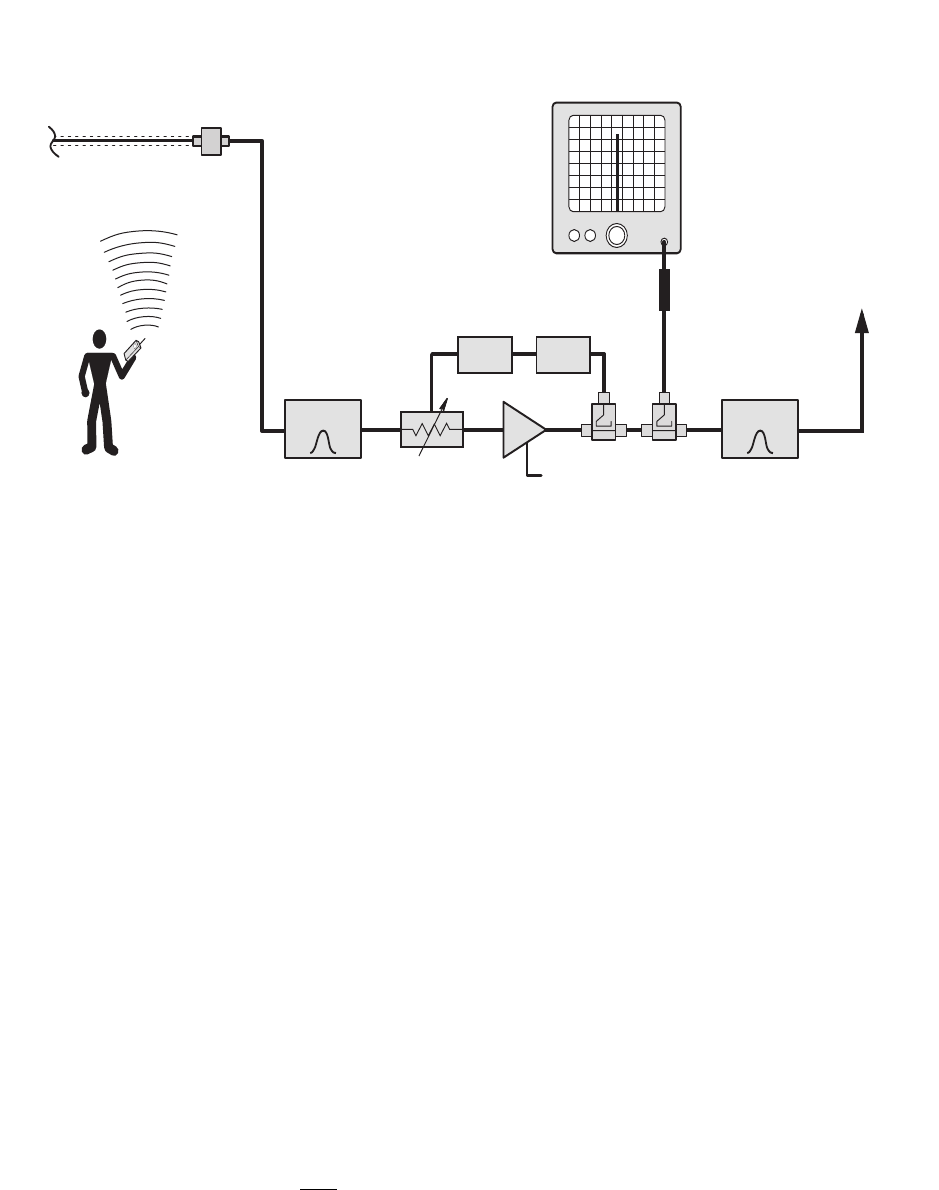User's Manual
Table Of Contents
- Installation and Operation Manual
- Table of Contents
- Introduction
- Installation
- Cautionary Notes
- Pre-RF Connection Tests
- OPERATION
- Signal flow
- System Components
- Field Adjustments
- Maintenance and Repair
- Recommended replacement parts
- Conversion Chart

TXRX Systems Inc. Manual 7-9408-1.2 07/25/05 Page 21
61-38-05 UserMan page 21 of 38
assumed that the procedures will be carried out by
a qualified electronics technician observing all
standard safety practices.
Filter Tuning
Filters used in TX RX Systems’ signal boosters are
passive devices of rugged electrical and mechani-
cal design. They are tuned at the factory for the
original design requirements and require no adjust-
ment or maintenance. These devices will stay prop-
erly tuned unless they have been physically
damaged or are tampered with. Filter tuning falls
into two categories; retuning to the original fre-
quency such as when a filter is being repaired or
replaced, or tuning to new frequencies.
A number of points need to be considered before
attempting to tune a signal booster to frequencies
different from the original.
1) The Frequency Range Specification for the 61-
38-05 signal booster family does not mean that
an individual signal booster is field
tunable over
the entire indicated frequency range. This spec-
ification only indicates the frequency range for
which the 61-38-05 components are intended.
Many of the filter assemblies used in a particu-
lar booster maintain reasonable performance
over a range that is within ± 2% of the original
frequency. For greater changes in frequency,
the performance of the filters may degrade
severely. Therefore some filters may need to be
replaced or modified when large frequency
changes are made.
2) In a bidirectional system, will the new inbound
and outbound channels have the same fre-
quency separation from each other as the origi-
nal ones? Frequency separation in bidirectional
designs is one of the prime design criteria. If the
frequency separation decreases from the origi-
nal, the filters will provide less isolation so the
gain may also have to be reduced to prevent the
signal booster from oscillating. Increases in fre-
quency separation are more easily accommo-
dated.
3) If the bandwidth requirement increases, the
bandpass filters may not pass all of the new fre-
quencies. In most cases, the bandwidth of the
bandpass filters cannot be changed by the cus-
tomer.
DC
Sampler
Sampler
Detector
Electronic
Attenuator
OLC Assembly
Filter
Filter
Amp
DC
Control
10 dB Pad
SPECTRUM
ANALYZER
SIGNAL DISTRIBUTION SYSTEM
BOOSTED
RF SIGNAL
Figure 10
: Test equipment interconnection for surveying performance.










